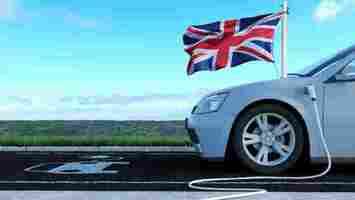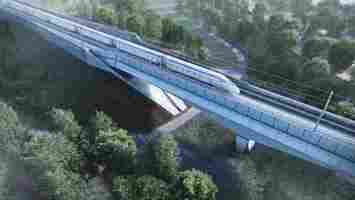The UK passes 40,000 EV connectors, but nearly half are in the South East
With more than 495,000 electric vehicles (BEVs and PHEVs) on the roads of the UK, the country’s charging point infrastructure is growing to meet the demand.

As of yesterday, there are now 40,181 charging connectors spread across 14,947 locations, according to Zap-Map , a UK-based online vehicle charging point locator.
Credit: Zap-Maom
There’s good news and less good news.
The less good news – while it’s promising that more locations are coming online,the geographical distribution of charging points strongly favors the country’s metropolitan capital, London.
Credit: Zap-Maom
The good news – the numbers are encouraging.
If we compare them with the stats in January , connectors have increased by 33%, and locations by 39%.
Here’s another significant trend.
Fast, rapid, and ultra-rapid chargers play the biggest role in the expansion of devices.
Credit: Zap_Maom
As more EV models support fast-charging, more of us will be able to take advantage of the tech without having to put our busy lives on hold.
What’s more, rapid chargers (including CHAdeMO, CCS, Type 2, and Tesla) have reached 10,075 connectors.
Credit: Zap-Maom
This means that rapid chargers now make up 25% of the total connectors, while 245 of them have been installed in the last 30 days.
After the unexpected cut of the plug-in car grant in March, it’s hopeful that the UK is improving its charging infrastructure to support widespread electric car use.
Fingers crossed the next milestone isn’t too far away.
Do EVs excite your electrons? Do ebikes get your wheels spinning? Do self-driving cars get you all charged up?
Then you need the weekly SHIFT newsletter in your life. Click here to sign up .
The UK has to step up its EV battery production to compete with the EU
Car manufacturing in the UK stalled dramatically last year. The head of the industry trade body described the situation as the “toughest in decades”, and the numbers certainly back up his claim .

The latest car registration figures show that 2021 was up just 1% on a COVID-ravaged 2020 – and production actually went into reverse gear.
In November 2021, UK car production dropped by almost 29% , the fifth consecutive month of output falling, and the worst since the mid-1980s. October’s figures had been the worst since the 1950s .
Overall, car making up to November 2021 was 6.2% below that of 2020, with 797,261 cars made – worse even than a year in which UK production was so badly affected by factory stoppages caused by the first lockdowns.
This matters not only for the 180,000 people employed directly in auto manufacturing or the 864,000 jobs across the wider automotive industry. The industry accounts for 13% of total UK export of goods, worth £44 billion, and invests £3 billion each year into automotive research and development.
Nor is this just an issue for the UK. The global microchip shortage had a major impact in 2021, and could cost the global auto industry as much as US$210 billion (£155 billion) in lost sales in 2022, with output curtailed by almost 8 million vehicles.
Of the cars that were made in the UK, over 80% were due to be exported, with most of those (some 60%) bound for the EU. Asia accounted for 15.6% of UK car exports, the US 13.4% and Australia 1.2% (that new trade deal with Australia is welcome but won’t really boost UK car exports much). Overall, exports to the EU fell by 29% compared to the same period in 2020, with more dramatic falls further afield, down by 57% to Japan and by 67% to the US.
Now the chief executive of the Society of Motor Manufacturers and Traders, Mike Hawes, has called for more support for the industry . He also flagged up risks around new customs arrangements between the UK and EU that come into effect from January 1 2022.
He said: “With an increasingly negative economic backdrop, rising inflation and Covid resurgent home and abroad, the circumstances are the toughest in decades.
“With output massively down for the past five months and likely to continue, maintaining cashflow, especially in the supply chain, is of vital importance. We have to look to government to provide support measures in the same way it is recognising other COVID-impacted sectors.”
A smoother journey
Looking ahead, a new production outlook report forecasts that UK car and van production could edge above one million in 2022, and even reach 1.2 million in 2024. Back in 2016, the UK produced 1.7 million a year. But that now seems a very long time ago, with output damaged ever since by a combination of global markets, Brexit uncertainty, and COVID-related supply chain issues.
Longer term, the auto industry has to deal with the most pronounced change in its history, with a rapid shift now underway towards battery powered electric vehicles. The UK government has set a 2030 deadline to phase out the sale of petrol and diesel cars, but policies to actually get there seem half-hearted.
Progress is not helped for example, by the slow speed of charging infrastructure roll out, or the big cut in subsidies available for new battery electric vehicles which mean s many do not qualify for support .
On a positive note, British production of battery electric vehicles and hybrid cars (with a combustion engine and a battery) took a record share of production in 2021, accounting for around a third of all cars made in November, and more than a quarter (26%) over the year.
Of those, EV output was up in November by 53% to 10,359 units, hitting a new high of almost 14% of production, more than double the level a year ago. UK-based car makers like Nissan, MINI and the London Electric Vehicle Company produced more than 60,000 zero emission vehicles in 2021.
But UK battery production is lagging behind major investment across the EU, which is aiming to be independent in battery production by 2026, and has brought together seven countries to form the European Battery Alliance . And while there is confirmed investment in just one battery “gigafactory” in the UK, there are at least 15 under construction in countries including Sweden, France, Germany, Hungary and Poland.
Investment in battery production in the UK will need to be accelerated dramatically given the shift to electric vehicles is now underway. Beyond that, better and more joined-up support for the auto industry will be needed to get to 2030 with a viable mass UK auto industry intact.
This article by David Bailey , Professor of Business Economics , University of Birmingham , is republished from The Conversation under a Creative Commons license. Read the original article .
We asked an expert what canceling the HS2 Leeds branch means for UK high speed rail
Following leaked reports that the UK government would be scrapping plans for the UK’s long-awaited high-speed rail to extend to Leeds, transport secretary Grant Shapps has announced in the House of Commons that the eastern leg of HS2 will now reach only from Birmingham to the East Midlands, and that an additional high-speed line between Leeds and Manchester would no longer be built.

Instead, the newly published Integrated Rail Plan for the North and the Midlands , sets out proposals to upgrade existing lines to reduce journey times between the cities sooner (although not by as much).
This contrasts with previous statements made in February 2020 committing the government to building the full HS2 network. It also leaves a substantial section of the north of England without a high-speed rail connection to the rest of the country. We asked Colin Bamford, economist and emeritus professor of transport and logistics at the University of Huddersfield, what this would mean for the region.
Is the government correct in claiming that the new rail plan will deliver benefits to passengers in Yorkshire and the north-east – faster rail journeys in particular – much earlier and for a lot cheaper than the original HS2 plan?
The integrated rail plan brings forward local rail improvements by ten years, which means that passengers looking to travel from Leeds to Manchester or Sheffield, say, will indeed benefit from shorter journey times a lot sooner than they would have done if they’d had to wait for HS2 to reach west Yorkshire.
It is a lot quicker to improve existing infrastructure than to build an entirely new system. But we knew that already: it was from the outset one of the arguments made by detractors of high-speed rail. HS2 was never just about quicker journey times.
What other crucial issues would have been solved by HS2 that the new plan must now address?
Capacity is the primary issue. The current east-coast mainline has no spare slots: because of the time that has to be allocated between each service, you couldn’t run more services on that line even if you wanted to. The idea of HS2 was to take capacity off the current line and transfer it to the fast line, thereby freeing up more capacity. The new plan will be useless if it doesn’t make it possible to increase the number of possible journeys.
Further, there is the question of what will happen with freight. The aim with HS2 was to transfer passenger traffic to the new line, thereby releasing slots for freight. Rail freight has repeatedly been shown to be a lot more sustainable and environmentally friendly.
Why were you in favour of HS2?
Though initially sceptical about the project due to the cost involved and questions over who would be able to use it, back in 2013 I came round to the benefits it would bring for the region as a whole. It would effectively bring us well into the 21st century. Business leaders argued it would provide more jobs and more investment .
HS2 is a prestige project. Its very construction and operation would have given the north-east of England a much better feel, psychologically and economically. Other parts of the country have a more superior rail system. The new Northern Powerhouse Rail plan between Leeds and Manchester is simply upgrading track that has been neglected though lack of investment and spending for decades.
Government transport spending per capita in the Yorkshire and Humber region is half of what it is in Greater Manchester and one fifth of what it is in London.
As an undergrad at Leeds University, I drew a map of what a rapid-transit system would look like and 40 years on, the city is still waiting for one. So the fact that funding for a new tram system has finally been promised is a sweetener. Leeds, to be sure, has changed dramatically in last few years, but HS2 would have only accelerated that boom.
When you look at other European countries, from France to Italy, or countries in Asia, including South Korea, Taiwan, Japan and China, high-speed rail has a major bearing on those economies.
Is the cost-saving factor behind this decision justified?
The cost-benefit analysis for HS2 has never been convincing. When it first came out in 2013, the figures were questioned. There was a huge figure – £24.6 billion – in there for journey-time savings and a guesstimate too about the local economic impact, both of which were not convincing. As the cost of HS2 has gone up, the benefit to cost ratio has become increasingly unreliable .
The HS2 budget has indeed increased dramatically since the idea was first mooted, from £37.5 billion in 2011 to £110 billion in 2020 , for it to be brought to completion including the full eastern leg. By contrast, Boris Johnson’s newly announced plan, which includes more than HS2 but not the full route to Leeds, comes with a £96 billion budget.
That is substantially less. Given the unprecedented costs accrued due to COVID, though, such cuts to government spending are understandable. And £96 billion still represents a major investment. Half a bar of chocolate is better than no chocolate.
Article by Colin Bamford , Emeritus professor in transport and logistics, University of Huddersfield
This article is republished from The Conversation under a Creative Commons license. Read the original article .